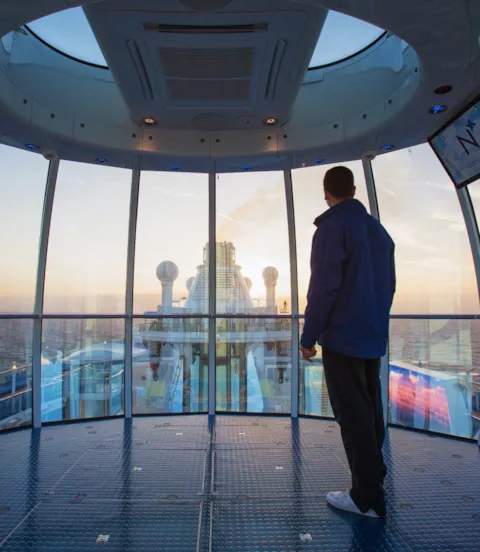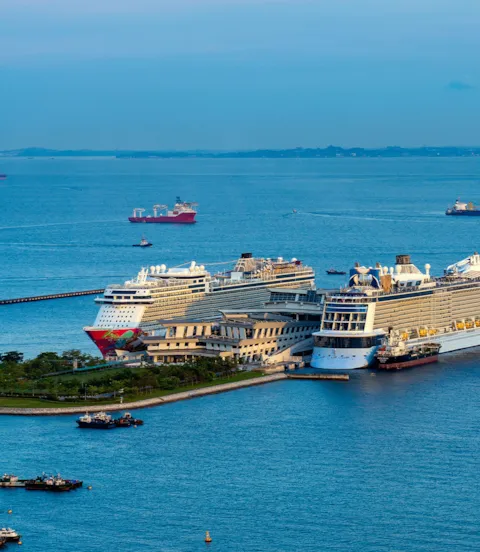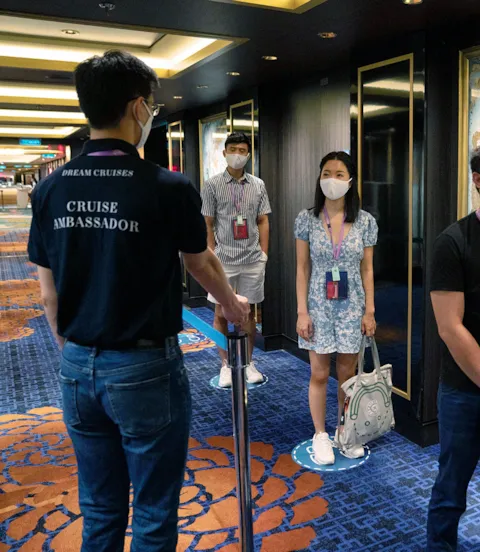Kick-starting cruise: Can pioneering certification enable industry rebirth?
DNV GL has joined forces with the Singapore Tourism Board (STB) to launch a comprehensive certification programme allowing cruise ships to resume operations from Singapore. Genting Cruise Lines and RCI are the first companies setting sail for a new age of Covid-safe operations.
“I think there are a few people here who need a holiday.”
Dr Shahrin Osman, Regional Head of Maritime Advisory Region Southeast Asia, Pacific & India, DNV GL – Maritime, could be talking about almost anywhere in these COVID-19-ravaged times. However, on this occasion he’s referring specifically to his home of Singapore and the demand for a new type of cruising.

Cruise customers keen to get back on board
“Genting Cruise Lines said the phones were ringing ‘non-stop’ as soon as the first voyage was announced, with around 6,000 passenger enquiries within the first five days,” says Osman, before adding with a smile: “I guess you could say there’s some pent-up demand.” And that may be an understatement.
Prior to the pandemic the cruise industry was in overdrive, with passenger numbers for 2019 at around 30 million (up from 17.8 million ten years earlier) and projections of a rise to 32 million in 2020. But, of course, that hasn’t happened. Current estimates of passengers for 2020 sit between a lowly 6 and 12 million, leaving a legion of disappointed ocean-goers stuck on dry land.
The question of exactly how to get them back where they belong is tormenting industry executives worldwide. But now, it seems, DNV GL and STB might have found the answer. It’s called CruiseSafe.

CruiseSafe: Collaborating for safe cruising
CruiseSafe is a collaborative project with the potential of creating a new industry paradigm – helping rebuild consumer confidence and demand through the creation of an independent endorsement and “mark of quality”.
It takes reference from DNV GL’s globally recognized Certification in Infection Prevention-Maritime (CIP-M) – a standard devised to help shipowners prevent, control and mitigate on-board infection risk – and Singapore’s safe management measures. In doing so it tailors an offering that blends established health and infection prevention best practice, maritime expertise and local understanding to deliver a safe, truly comprehensive solution, for both cruise companies and the hubs they serve.

Customized for the demands of operating
Simon Mockler, Head of Section, Advisory Services Americas, DNV GL – Maritime, explains: “CIP-M is the maritime version of DNV GL Healthcare’s CIP programme, which was introduced for certifying hospitals in January 2019. It is customized to a vessel’s individual characteristics and operations, with annual surveys and audits to ensure the proper prevention, control and mitigation of infection. It is, in short, tailor-made for the demands of operating in the new reality we now face.”
Rigid guidelines ensure effective infection prevention on land and on water
“STB, in conjunction with Singapore’s Ministry of Health, has its own stringent guidelines for addressing infection for land-based activities and organizations, with particular respect to the hospitality industry,” adds Mockler. “CruiseSafe is, in essence, a combination of these national and global standards. CIP-M provides a foundation and national Singaporean measures are built on top, tailoring optimal safety and control for all stakeholders and requirements. We strongly believe this joined-up approach pilots a new model for the cruise segment.”
The project means Singapore has become the first country in the world to develop and implement a mandatory audit and certification programme for cruise lines before they can commence sailings

Safety first - measurements on-board
So, what does this mean in practice? What awaits travellers stepping on board a certified cruise vessel?
The first thing is a lot more space, with reduced capacity for pilot cruises to enable adequate safe distancing for passengers, all of whom will initially be residents of Singapore. Further CruiseSafe standards include:
- Infection control measures at every stage of a passenger’s journey, including a mandatory COVID-19 test prior to boarding.
- Strict and frequent cleaning and sanitization protocols on ships.
- Safe management measures aligned with prevailing national policy at the time of sailing.
- Ensuring 100 per cent fresh air throughout the ship; no recirculation of air.
- Setting up on-board measures to discourage close contact and intermingling between groups of passengers.
- Emergency response plans for incidents relating to COVID-19.
“The safety and security of passengers, crew and the local community is absolutely paramount,” Osman notes, “so the measures are understandably stringent, but not so much so that they detract from the cruise experience. This is still a holiday after all, we just have to have the systems in place to ensure it’s a very safe, enjoyable one.”

Singapore is carefully reopening the economy and tourism
The government here has been quick to impose measures, throughout the course of the pandemic, that have sought to mitigate risk and control the spread of infection. Care, as Osman points out, defines their approach to both the virus and the transition out of lockdown: “Singapore is carefully resuming economic activity and tourism, and every step forward is cautious, considered and based on evidence and relevant expertise.”

A step-by-step approach to return to cruise operation in Singapore
“This pilot is a case in point. The government will closely monitor the outcomes of the pilot sailings before deciding on the next steps forward. Any operator found to be non-compliant faces penalties including fines, suspension of sailings and a revocation of their certification. This is a hugely important development and, quite rightly, it has to be facilitated with complete commitment, quality and trust.”

Addressing infection risks with the help of CIP-M requirements
As for the future beyond Singapore, DNV GL is hoping to transfer its collaborative way of working to new regions and a broad base of cruise operators.
Mockler notes that DNV GL, which has certified over 600 hospitals through its Healthcare division, has seen growing demand for its CIP-M offering across multiple vessel segments and is always eager to work with partners to tailor solutions to local and industry requirements.
“We have proven expertise that is transferable across sectors and are focused on helping customers meet operational objectives with safety, security and the minimum of risk,” he concludes. “COVID-19 has created a new set of challenges, but with the right controls, the right systematic framework and the right education within organizations we can address them. CruiseSafe is an example of that. As other countries look to open up their economies to tourism again, this programme demonstrates a clear pathway for finally getting passengers back on the vessels they love so much.”
Dr Shahrin Osman
Business Development Director, DNV Maritime Advisory
- Royal Caribbean International
- hit1912 - stock.adobe.com
- Genting Cruise Lines